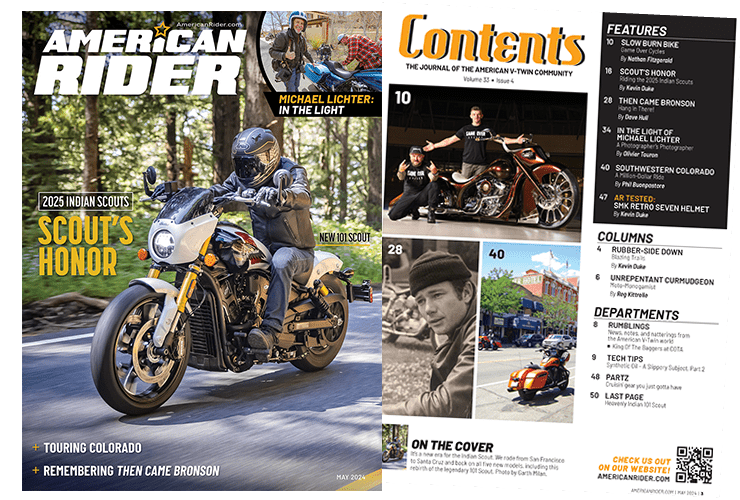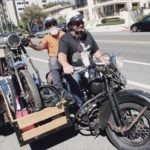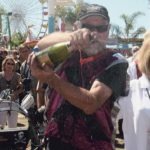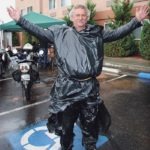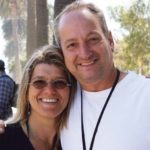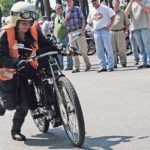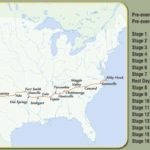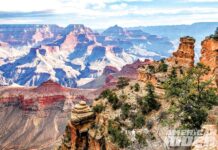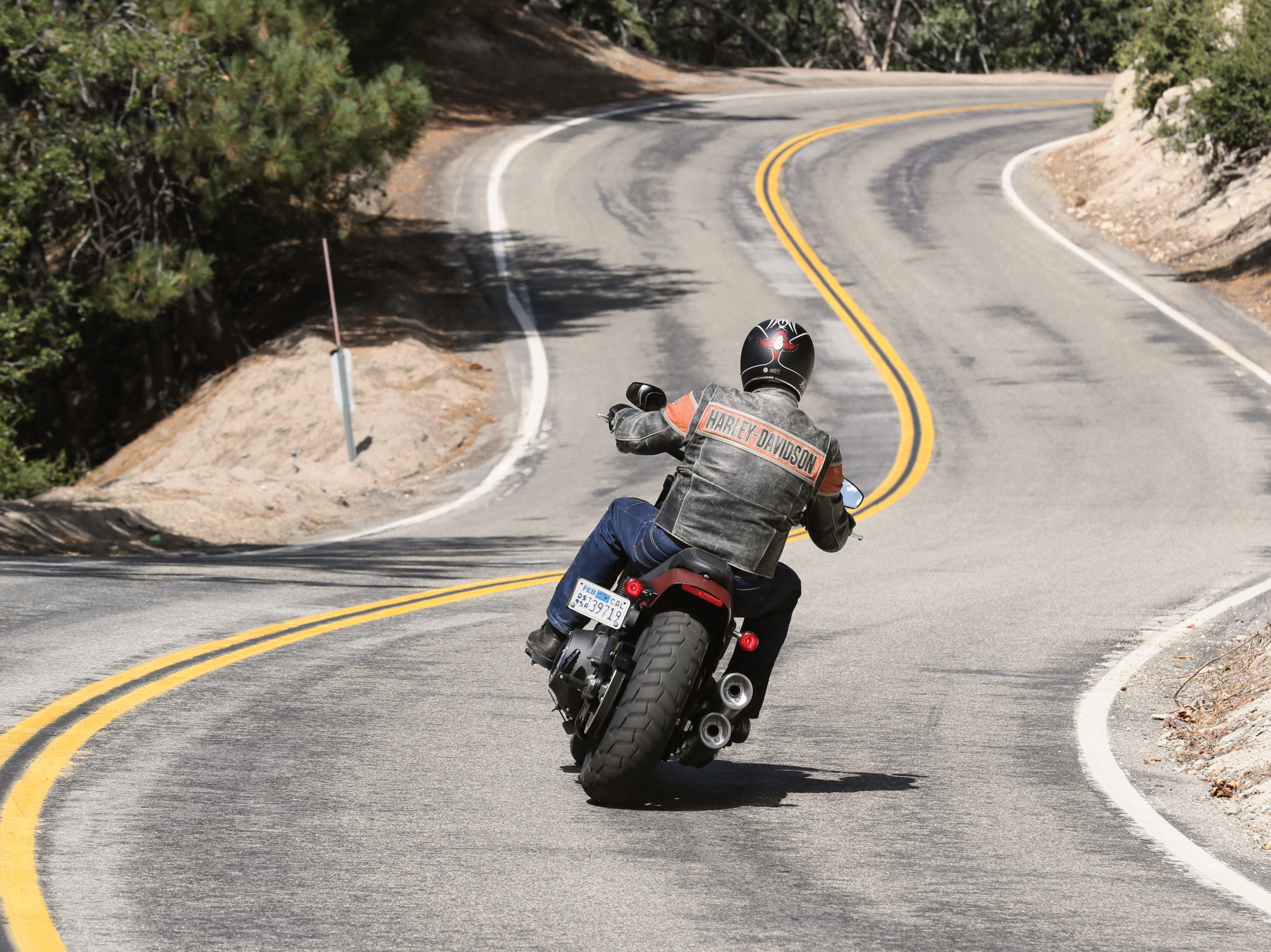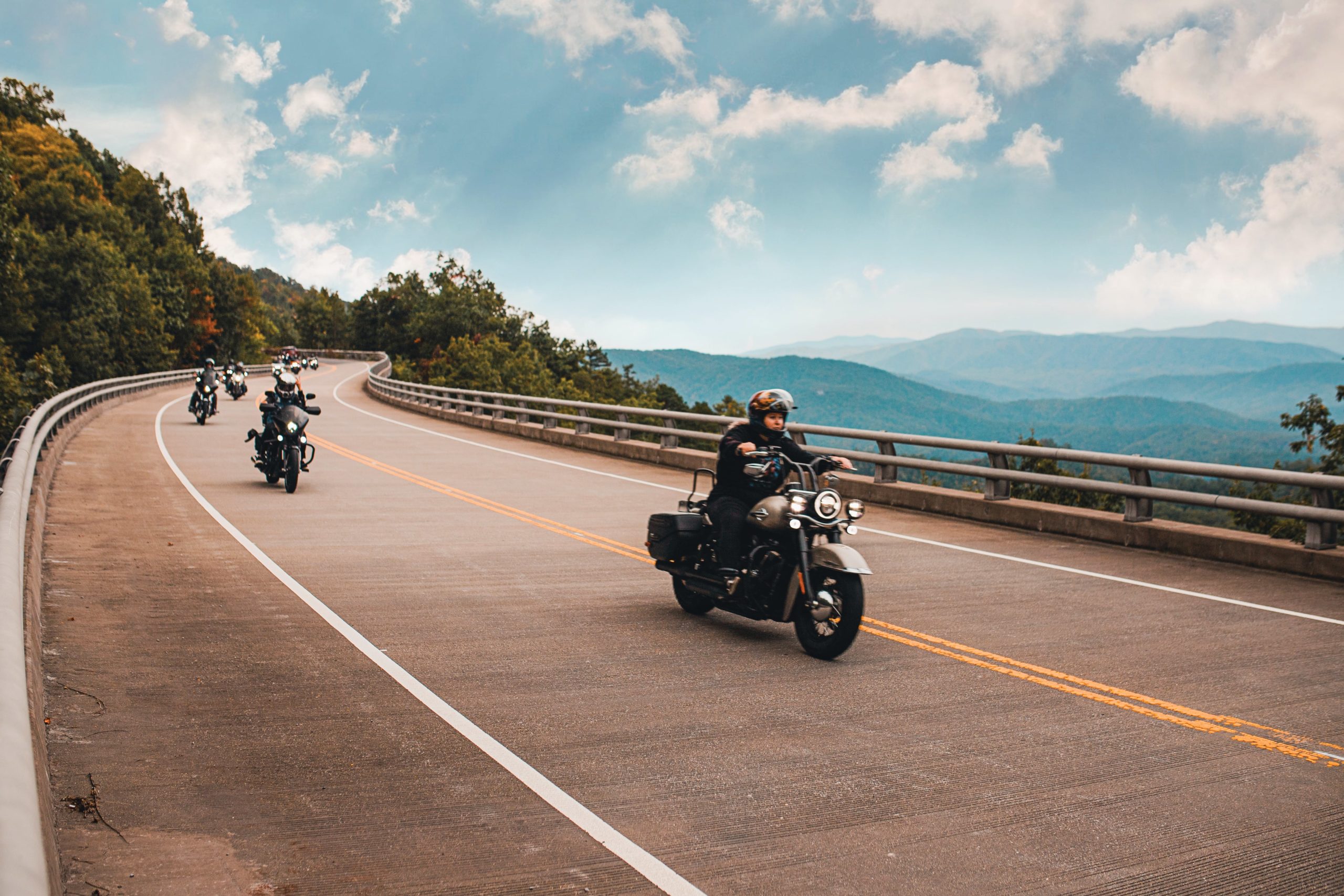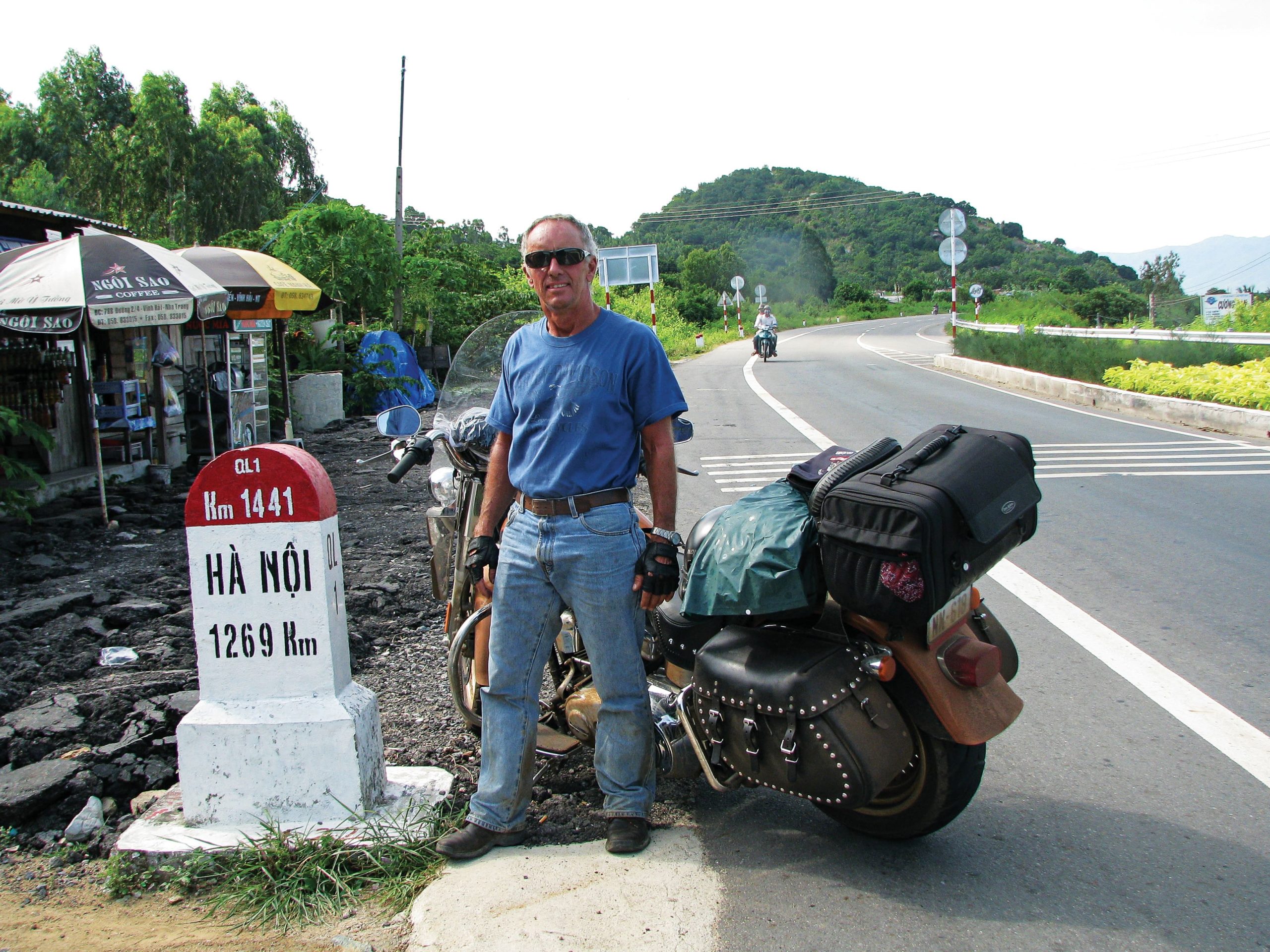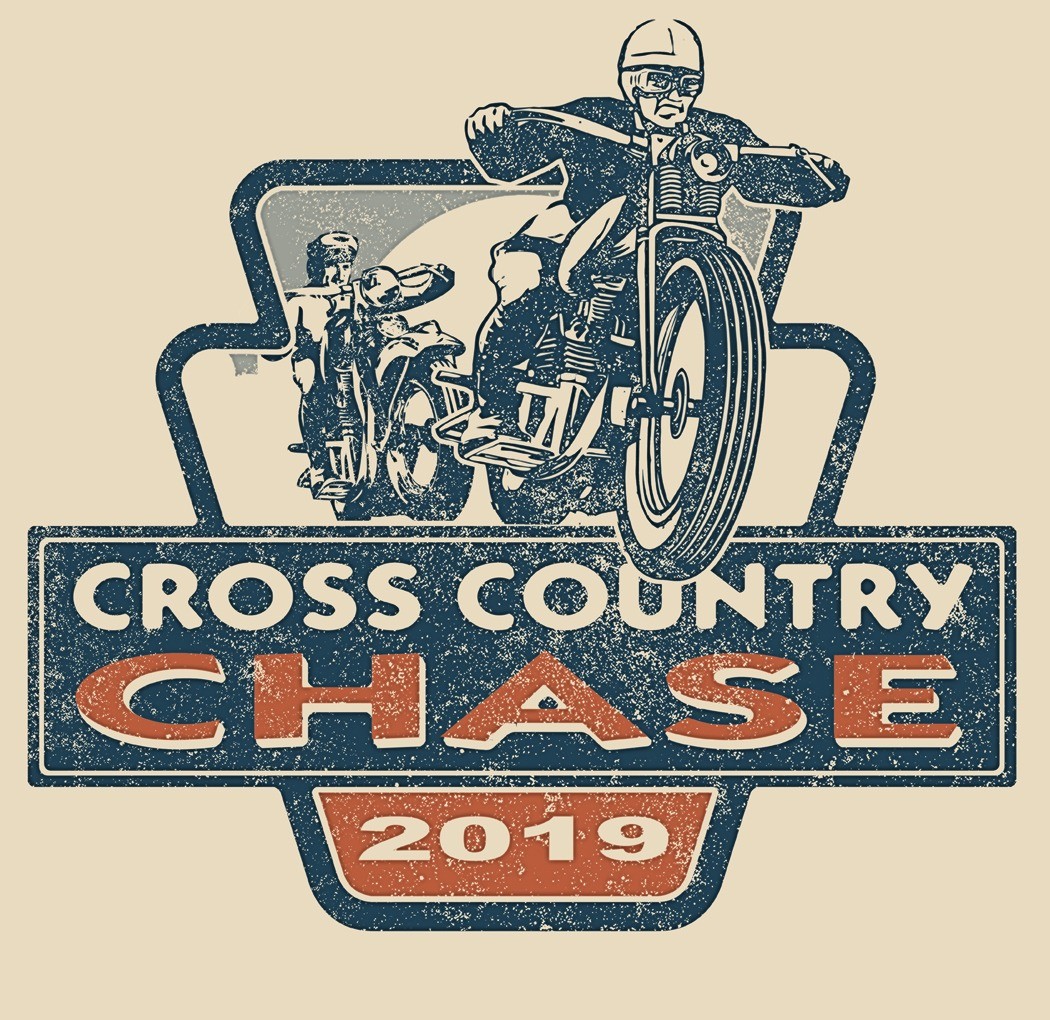The magical history tour
Vintage iron conquers the continent
Santa Monica, Calif., Sept. 26—Standing in the bright sunshine that swathed the pier this late September afternoon in Santa Monica, vintage motorcycle restorer and promoter Lonnie Isam was all smiles as he surveyed the hysteria surrounding him. Champagne showered the cheering crowds while motorcycle riders slapped each other’s backs, hugged and congratulated each other in celebration of the 3,294 miles ridden in 17 days and the experiences they had all shared. Motorcycling history had been made as more than 40 Motorcycle Cannonball riders steered their vintage pre-1916 machines across the continent. And while it was all initiated by the dreams of this one man, it was a community of tenacious and enthusiastic motorcyclists that made Lonnie’s dream a reality.
A mere three weeks prior, as the same crowd stood on a different pier along a different ocean, the excitement was just as palpable. This group began their odyssey in Kitty Hawk, North Carolina, beside the Atlantic Ocean. In between, an incredible drama had unfolded. Some records had been set, history had been made and it was a proud moment for all.
The entire adventure had been a slow realization of daydreaming and dares played out over years among Isam’s vintage riding buddies as they bantered about the motorcycling forefathers and their remarkable feats, with the friends questioning their own abilities and limitations. Who could, after all, possibly hope to compete with the accomplishments of great motorcyclists like Erwin “Cannonball” Baker, George Wyman or even the Van Buren sisters? For the majority of Lonnie’s group, 50 miles in a day was the most they had logged. Today’s roads are better, towns are closer and the amenities of the modern world would certainly make a transcontinental trip easily doable. At least, that was the reasoning. The run would be about man, machine, and the route mapped out along roads that time forgot. Nothing more. Unadulterated and simple, theMotorcycle Cannonball would come to break all the rules of modern day runs.
Time machines
In the world of vintage motorcycling, the pre-1916s are a respected collection of simple yet cantankerous machines. Keeping these bikes running was a real concern. It’s not like there are parts for 95-year-old motorcycles down at the local Pick-n-Pull, after all. Additionally, the small tanks meant the need for frequent fuel stops. The smaller, single-speed machines topped out at 25 to 35 miles an hour, thereby making freeway travel outof the question, and the loss of power going up steep inclines for some of the machines meant close consideration of the terrain.
The route, meticulously laid out by John Classen over much of the remaining sections of Historical Route 66, averaged over 250 miles a day. There was just one day off for the entire run and Hot Springs, Arkansas, rolled out the red carpet to welcome the riders as they enjoyed their day of rest in that city.
All along the route, at every stop, the public clamored to get a closer look at the antique motorcycles and to talk to the riders. The outpouring of support was overwhelming and the riders seemed to draw energy from the well-wishers, which was a good thing, since most were running on little more than sheer adrenalin.
This run was a competition; a daily tally of points would determine the winner in Santa Monica. There were three classes based on the engines. Class 1 was single cylinder/single speed belt-driven bikes. Class 2 was twin cylinder/single speed bikes, with either belts or chains. Class 3 was the multi-cylinder/multi-speed bikes with transmissions. They would have the easiest ride and could reach speeds of 65 mph.
The collection of riders comprised an international pack of 43 men and two women that included two brothers, one married couple and a wide variety of personality types and temperaments. The normal motorcycle brand devotion and the “my bike’s better than yours” jibes made it to the party, to say nothing of the friendly East Coast vs. West Coast barbs that flew constantly, yet every one of the contestants had a genuine desire to see their road mates cross the finish line. For most, the word “competition” wasn’t even a factor. “Completion” was a more important word. From the beginning, the group became a family.
Pedal pushers
Pope, Sears, Excelsior, Militaire, Henderson and, of course, Indian and Harley-Davidson motorcycles were just some of the brands represented in the line-up at the Wright Brothers Memorial in Kitty Hawk, North Carolina. On start day, with less than 50 miles behind them, some of the geriatric machines had already started to have engine troubles, and so it went for the entire trip across 11 states through all kinds of weather. Among the key issues were magneto failures, bent and broken pushrods and rockers, broken belts and blown tires. And then there was the normal constant fiddling that it takes to keep elderly bikes on the road.
Right from the jump, a pattern was established: Ride all day, check in with officials, then get to work on the bike. Sometimes nights stretched into days as engines were rebuilt in hotel parking lots and bleary-eyed riders saddled up at daybreak to do it all over again. Exhaustion was a normal by-product, yet riders and their mechanics generously offered everything from tools and advice to coveted parts and materials to their downed brethren.
Every one of the 120-odd members of the Cannonball entourage, which included entrants’ support crews, sidecar support and sweep vehicles, staff and riders, knew this was a once-in-a-lifetime journey. We experienced a complete transformation, stepping out of our “citizen” lives and morphing into road dawgs. Nothing else mattered but our tribe, the machines and the horizon. It was pure, euphoric and completely exhilarating.
For all the Cannonballers, the husband-and-wife team from Germany, Katrin Boehner and Dieter Eckel, became instant darlings. Both riding singles, she on a 1907 JAP (the oldest bike in the event) and he on a 1913 BSA, the elegant pair traveled together and usually brought up the rear, since their tiny machines rarely went above 25 mph.
Katrin’s motorcycle had no clutch or transmission, and was started by pushing the bike as she ran alongside until the engine caught. The petite woman would then sling her leg over the seat and putt on down the road. This dance was repeated each and every time she came to a stop over the course of the entire 3,294 miles.
The couple maintained the top two slots in Class 1 for most of the run, until Dieter’s BSA snapped its front fork cleanly in two in Arizona and sent rider and machine sliding across the blacktop. Dieter managed to stay onboard and escaped with slight road rash, but the bike did not fare as well. Not to be sidelined, Dieter rode his backup bike until it, too, failed. Afterwards, he took up a permanent position as a passenger behind sidecar dude Jerry as they rode along, trailing Katrin across the rest of Nevada and California.
The youngest rider, 24-year-old Matt Olsen, who had meticulously rebuilt his 1913 Sears motorcycle for the run, left the ride after crashing in Scottsborough, Alabama, just four days into the run. His front wheel went into a pothole and Matt slammed face first into the pavement, breaking his left arm and nose. After a successful surgery, he was flown home. His father Carl was also on the run and, at Matt’s insistence, stayed on to complete the ride.
Carl’s job for the event was to pack photographer Michael Lichter aboard his 1953 Panhead, facing backwards, as Lichter snapped amazing photos of the riders while they traversed the country. Yes, the two men rode back-to-back from coast-to-coast. We’re not positive, but we’re pretty sure Michael set a record for the most miles traveled backwards on a motorcycle. I mean, really, who else would do such a thing, and why?
Bill Rodencal brought along his wife and home-schooled daughters Cassidy and Willa. The young ladies were bright and charming and every rider cherished the time they got to spend visiting with them. As rider number 33, Bill took several days off from the ride to spend sightseeing with his family. Did he roll into Santa Monica with the rest of the riders? You bet he did!
A group of four Cannonball riders, along with their support vehicle driver, dubbed their clan “Rev’s Revenge Racing” in honor of their friend, who unexpectedly passed away before he could participate in the Cannonball. Out of respect for Stuart Munger, who they all called “Rev” (for Reverend), the guys brought along a bit of his ashes so he, too, could experience the journey.
Cris Sommer Simmons, the only female American rider and author of the popular book “American Motorcycle Girls 1900–1950,” was wounded early on. A cager accidentally parked a car on Cris’ foot as she knelt beside “Effie,” her 1915 Harley-Davidson, in a parking lot. Fortunately, nothing was broken, but she spent the rest of the ride bandaged, sore, and depending heavily on fellow riders and the support crews to assist her. Her female mechanic, Athena “Chickie” Ransom, and friend Laura Klock, as well as her husband, Doobie Brothers guitarist Pat Simmons, comprised the “Team Effie” support crew that kept Cris on the road.
Two brothers from Nebraska made the ride together. The elder of the two, Kris Thompson, was astride a 1915 Henderson, and David rode a 1914 Indian. Each experienced his own share of mechanical issues, including Kris’s pushrod—replaced early on by a North Carolina man who carved a new one from a solid piece of steel. The brothers worked together to keep each other mobile, but when David’s Indian caught fire just before Victorville, California, things looked bleak.
As flames were consuming Dave’s engine, the calm Midwesterner simply pulled off the road, leaned the bike to its side and extinguished the fire. After putting things together to continue the ride, Dave discovered his oil tank had split, so he and his wounded warrior were delivered to the day’s end via transport vehicle. The siblings worked into the night to get David mobile and both men rolled across the finish line, with huge smiles on their faces, the next afternoon.
For Buddy Stubbs, the Arizona Harley-Davidson dealership owner, the adventure aboard his 1915 Excelsior sidecar was a struggle. After the machine finally gave up the ghost, Buddy shipped the bike to Arizona and hopped a plane back to his desert home. Not to be left out of the final festivities, Buddy flew into Santa Monica with a boxload of engraved trophies for the 2nd and 3rd place riders, and graciously presented the prizes to the respective recipients at the awards ceremony.
Ed Zolonsky, rider number 25 from Connecticut, struggled with mechanical problems for the entire journey and finished the run with a scant 208 miles of riding. No matter. The very rare 1910 Flying Merkel crossed the pier with the help of support crews and Ed was there to share in the magic of the amassed energy of the cheering crowds.
Unsung heroes
Wounded or disabled bikes that couldn’t be quickly or safely repaired at the roadside were transported by one of the volunteer sidecar riders. Equipped with a wide variety of goodies, including fuel, tools, miscellaneous parts and a lot of ingenuity, sympathy and water for the riders, these gentlemen were the unsung heroes of the event. These seven gentlemen were dubbed the “Sidecar Dudes.”
Canuck Jim, riding his 1956 Panhead and hailing from Canada, transported me as I took pictures and operated my mobile office from his sidecar. At the end of the ride, Jim’s wife flew in to meet him and they then loaded up to ride the old Pan back to Canada.
“British Tim” Yeates from Gibraltar was on a Knucklehead, as were Jerry Weiland and Kyle Oanes. Ed Gorman and Gary Haynes were on modern motorcycles. Pat “Mongo” Kelly, aboard a 1966 Shovelhead that was donated by Mitchells’ Modesto Harley-Davidson, was sent flying into a tree when the bike lost its brakes in a corner outside of Chattanooga, Tennessee. Besides leaving him badly bruised and scraped, Mongo also landed in poison oak and had to take a trip a few days later to the hospital for meds in Tulia, New Mexico. The motorcycle, however, was badly crunched and had to be delivered by flatbed to the next stop, which was Coker Tires.
Owner Corky Coker generously flung open the doors to his shop and allowed riders to work on their bikes all night, including Mongo who, with the help of the Coker crew, put the Shovelhead back together. By daylight the welded, scarred and slightly tilted side hack was ready to serve out its commission. The motorcycle, however, looked like it had been raised from the dead. At least one rider refused to have his beautiful vintage motorcycle seen in the company of the “Orange Crush,” but for those riders in genuine need, the Frankenstein bike and its poisoned pilot were a welcome sight.
David Jones from Kitty Hawk, North Carolina, also rode the entire distance (and back) as support on his 2002 Kawasaki Nomad. Another rider, Joe Sparrow, happened upon the entourage and after sharing his expertise and knowledge, continued on with us and proved himself a valuable part of the crew. Bill Wood, the AMCA’s magazine editor, drove truck and trailer for downed riders, transported the support crew’s luggage and served as an information conduit.
On Sunday afternoon, as the entourage arrived at the Santa Monica pier, 10 riders had perfect scores and of those 10, two were from Class 2. Both were riding Excelsiors. Brad Wilmarth from Virginia was on a 1913 and finished first overall. Alan Travis hails from Arizona and rode a 1914.
Katrin Boehner, the petite lady from Germany, took first in Class 1 and Rev’s Revenge crew member Rick McMaken was awarded first in Class 3. Katrin took home a bronze trophy sculpted by Jeff Decker; Brad and Rick both received original paintings by David Uhl.
The Motorcycle Cannonball had 45 riders registered and by the waving of the checkered flag, 41 of those riders had finished. A few motorcycles crossed the line without their riders so that all who tried would be represented. In the end, it was not about winning or losing. The ride was about brotherhood, community and tenacity. It was about seeing a dream through to the end. It was about camaraderie and accomplishment, and everyone who participated rode away with a once-in-a-lifetime experience that touched their very souls. As rider #38 Mike Madden said, “I’m not a sentimental guy, but this was as close to magic as you can get. It was just a great group of folks and this experience can never be duplicated.” (www.motorcyclecannonball.com)

